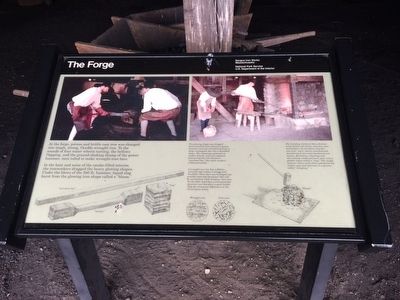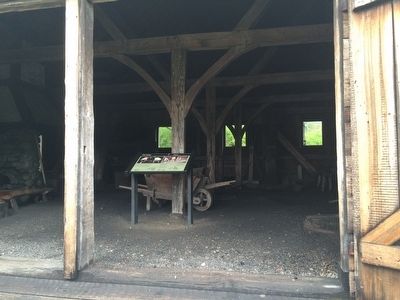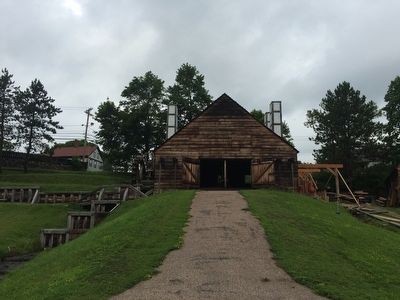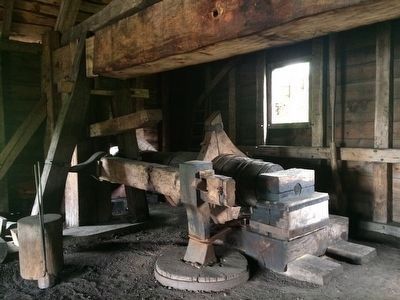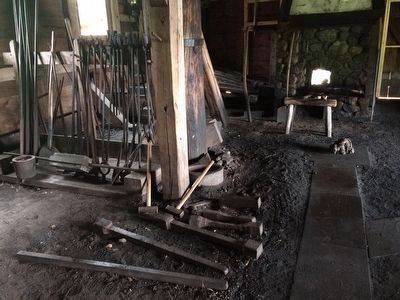Saugus in Essex County, Massachusetts — The American Northeast (New England)
The Forge
In the heat and noise of the smoke-filled interior, the ironworkers dragged the heavy glowing shapes. Under the blows of the 500 lb. hammer, the liquid slag burst from the glowing iron shape called a “bloom.”
The glowing shape was dragged back and forth from fineries to power hammer, and was transformed from a large rectangular bar into a dumbbell shape. The reheating continued in the chafery hearth, and with repeated hammering the iron became a “merchant bar,” the major product of Hammersmith.
A wrought-iron bar has a fibrous structure that makes it strong and bendable. These bars can be forged into reliable tools and hardware that will resist fracture while bending. Cast iron on the other hand has a more granular structure and therefore is quite brittle. Note the structural differences in the illustrations below.
The building sheltered three distinct work stations for finers, hammer men and helpers. In two finery hearths, cast-iron “sows” slowly remelted and decarbonized into semi-hardened iron masses. Kneading, reheating and stir-cooking condensed each mass into a pliable shape called a “loop.” The sledge hammer blows of the finer splattered out molten slag and charcoal in a process called “shingling.”
Captions:
“merchant bar”
“ancony”
“loop”
Wrought iron
Cast iron
“bloom”
Topics. This historical marker is listed in these topic lists: Industry & Commerce • Settlements & Settlers.
Location. 42° 28.157′ N, 71° 0.462′ W. Marker is in Saugus, Massachusetts, in Essex County. Marker can be reached from Bridge Street. The marker is at Saugus Iron Works National Historic Site, near the site's working forge. Touch for map. Marker is in this post office area: Saugus MA 01906, United States of America. Touch for directions.
Other nearby markers. At least 8 other markers are within walking distance of this marker. The Casting House (within shouting distance of this marker); River Basin Terminus (within shouting distance of this marker); Making Iron (within shouting distance of this marker); Blacksmith Shop (within shouting distance of this marker); Appleton's Pulpit (approx. 0.2 miles away); Saugus Vietnam Memorial (approx. 0.3 miles away); Saugus Massachusetts World War I Honor Roll (approx. 0.3 miles away); Saugus Korea/Vietnam Memorial (approx. 0.3 miles away). Touch for a list and map of all markers in Saugus.
Credits. This page was last revised on June 16, 2016. It was originally submitted on July 27, 2015, by J. Makali Bruton of Accra, Ghana. This page has been viewed 268 times since then and 11 times this year. Photos: 1, 2, 3, 4, 5. submitted on July 27, 2015, by J. Makali Bruton of Accra, Ghana. • Bill Pfingsten was the editor who published this page.
